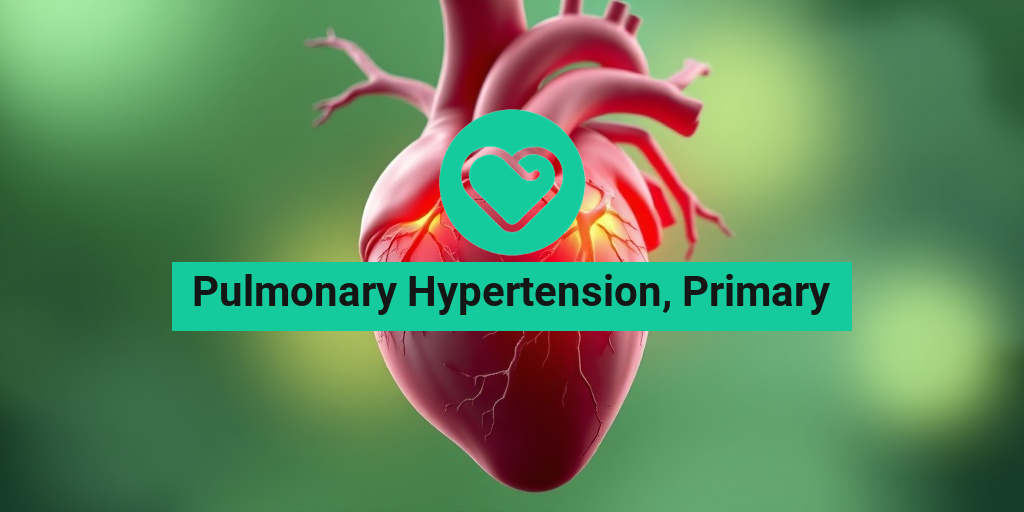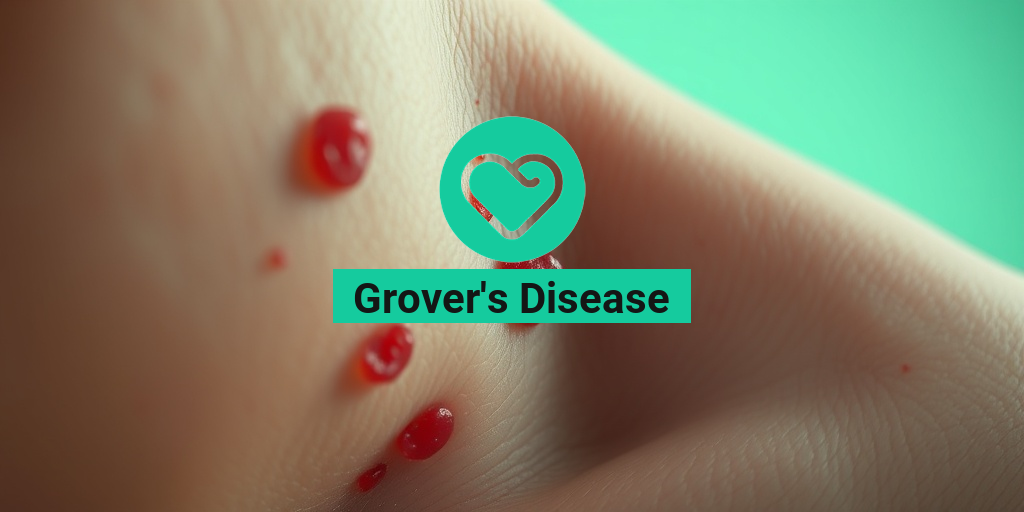What Is Pulmonary Hypertension?
Pulmonary hypertension (PH) is a serious condition characterized by elevated blood pressure in the pulmonary arteries, which are the vessels that carry blood from the heart to the lungs. This increase in pressure can lead to various complications, including heart failure, and significantly impacts a person’s quality of life. Understanding pulmonary hypertension is crucial for early detection and effective management.
Understanding the Basics
To grasp the concept of pulmonary hypertension, it’s essential to know how the circulatory system works. The heart pumps oxygen-poor blood to the lungs through the pulmonary arteries. In healthy individuals, the pressure in these arteries is relatively low. However, in those with pulmonary hypertension, the pressure rises, making it difficult for the heart to pump blood effectively.
Symptoms of Pulmonary Hypertension
Recognizing the symptoms of pulmonary hypertension is vital for timely intervention. Common symptoms include:
- Shortness of breath: This often occurs during physical activity but can progress to resting.
- Fatigue: A general feeling of tiredness that doesn’t improve with rest.
- Chest pain: Discomfort or pain in the chest area.
- Swelling: Fluid retention in the legs, ankles, or abdomen.
- Palpitations: An irregular heartbeat or feeling of a racing heart.
If you experience any of these symptoms, it’s essential to consult a healthcare professional for evaluation and potential testing.
Primary Pulmonary Hypertension Explained
Primary pulmonary hypertension (PPH), also known as idiopathic pulmonary arterial hypertension, is a specific type of pulmonary hypertension that occurs without any identifiable cause. Unlike secondary pulmonary hypertension, which can result from other medical conditions such as heart disease or lung disorders, primary pulmonary hypertension arises independently.
Causes of Primary Pulmonary Hypertension
The exact cause of primary pulmonary hypertension remains largely unknown, but several factors may contribute to its development:
- Genetic predisposition: Some individuals may inherit genes that increase their risk of developing PPH.
- Environmental factors: Exposure to certain toxins or drugs may play a role.
- Other health conditions: Conditions like myelofibrosis can be associated with PPH.
Diagnosis and Treatment
Diagnosing primary pulmonary hypertension involves a series of tests, including:
- Echocardiogram: An ultrasound of the heart to assess its function and the pressure in the pulmonary arteries.
- Right heart catheterization: A procedure that measures the pressure in the pulmonary arteries directly.
- Blood tests: To rule out other conditions that may cause similar symptoms.
Treatment for primary pulmonary hypertension focuses on managing symptoms and improving quality of life. Options may include:
- Medications: Such as vasodilators, which help widen blood vessels and lower blood pressure.
- Oxygen therapy: To ensure adequate oxygen levels in the blood.
- Lifestyle changes: Including regular exercise, a healthy diet, and avoiding high altitudes.
Living with Primary Pulmonary Hypertension
Living with primary pulmonary hypertension can be challenging, but with proper management and support, individuals can lead fulfilling lives. It’s essential to work closely with healthcare providers to monitor the condition and adjust treatment as necessary. Resources like Yesil Health AI can provide valuable, evidence-based health answers to help you navigate this condition.
In conclusion, understanding pulmonary hypertension, particularly primary pulmonary hypertension, is crucial for early detection and effective management. If you or someone you know is experiencing symptoms, don’t hesitate to seek medical advice. Early intervention can make a significant difference in outcomes and quality of life. 🌟
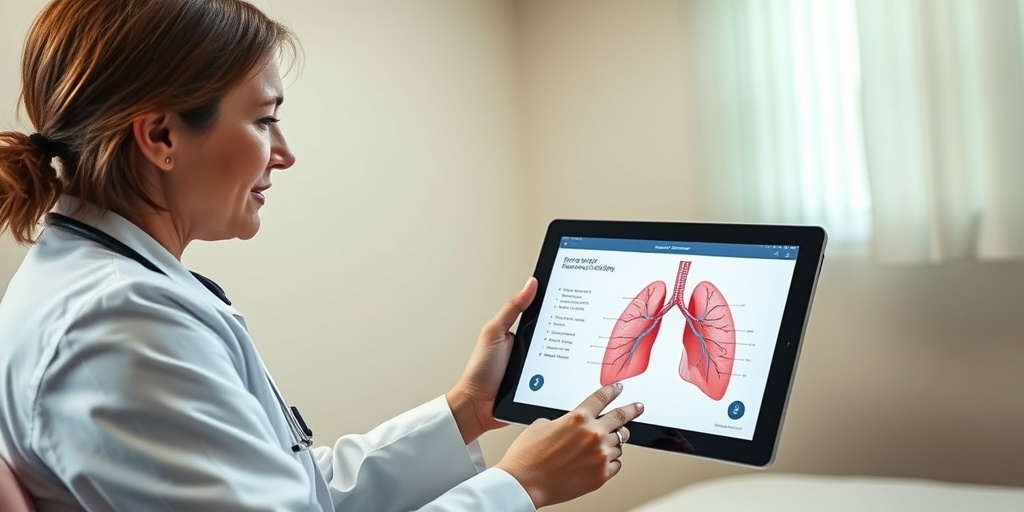
Symptoms of Pulmonary Hypertension
Pulmonary hypertension (PH) is a serious condition characterized by high blood pressure in the pulmonary arteries, which can lead to significant health complications. Recognizing the symptoms early is crucial for effective management and treatment. Here are some common symptoms associated with pulmonary hypertension, primary:
1. Shortness of Breath
One of the most prevalent symptoms of pulmonary hypertension is shortness of breath, especially during physical activities. Individuals may find themselves easily fatigued or out of breath after minimal exertion, which can significantly impact their daily lives.
2. Fatigue
Chronic fatigue is another common symptom. Patients often report feeling unusually tired, even after a full night’s sleep. This fatigue can be debilitating and may worsen over time as the condition progresses.
3. Chest Pain
Some individuals with pulmonary hypertension experience chest pain or discomfort. This pain can vary in intensity and may be mistaken for other conditions, making it essential to consult a healthcare provider for proper evaluation.
4. Dizziness or Fainting
Due to reduced blood flow and oxygen delivery, patients may experience dizziness or even fainting spells, particularly during physical activity. This symptom can be alarming and should be addressed promptly.
5. Swelling in the Legs and Ankles
Fluid retention can lead to swelling in the legs, ankles, and abdomen. This occurs as the heart struggles to pump blood effectively, causing fluid to accumulate in the body.
6. Heart Palpitations
Some individuals may notice heart palpitations or an irregular heartbeat. This symptom can be distressing and may indicate that the heart is working harder to compensate for the increased pressure in the pulmonary arteries.
7. Bluish Coloration of the Lips and Skin
In severe cases, a bluish tint to the lips and skin, known as cyanosis, may occur. This is a sign that the body is not receiving enough oxygen and requires immediate medical attention.
Recognizing these symptoms is vital for early diagnosis and treatment of pulmonary hypertension. If you or someone you know is experiencing these signs, it’s essential to consult a healthcare professional for a thorough evaluation.
Causes of Primary Pulmonary Hypertension
Understanding the causes of primary pulmonary hypertension is crucial for effective management and treatment. Unlike secondary pulmonary hypertension, which is caused by other medical conditions, primary pulmonary hypertension occurs without any identifiable cause. Here are some potential factors that may contribute to its development:
1. Genetic Factors
Genetics can play a significant role in the development of primary pulmonary hypertension. Certain inherited conditions, such as heritable pulmonary arterial hypertension, can increase the risk of developing this condition. If there is a family history of pulmonary hypertension, individuals may be at a higher risk.
2. Environmental Factors
Exposure to certain environmental factors, such as high altitudes, can contribute to the development of primary pulmonary hypertension. Living at high elevations can lead to changes in blood pressure and oxygen levels in the body.
3. Hormonal Changes
Some studies suggest that hormonal changes, particularly in women, may influence the development of primary pulmonary hypertension. Conditions such as pregnancy or the use of certain hormonal medications may increase the risk.
4. Other Medical Conditions
While primary pulmonary hypertension is not directly caused by other medical conditions, certain diseases may increase the likelihood of developing it. For instance, individuals with myelofibrosis or other blood disorders may be at a higher risk.
5. Lifestyle Factors
Certain lifestyle choices, such as smoking and a sedentary lifestyle, can contribute to the risk of developing pulmonary hypertension. Maintaining a healthy lifestyle can help mitigate some of these risks.
While the exact cause of primary pulmonary hypertension remains unclear, understanding these potential contributing factors can help in early detection and management. If you suspect you may be at risk, it’s essential to discuss your concerns with a healthcare provider.
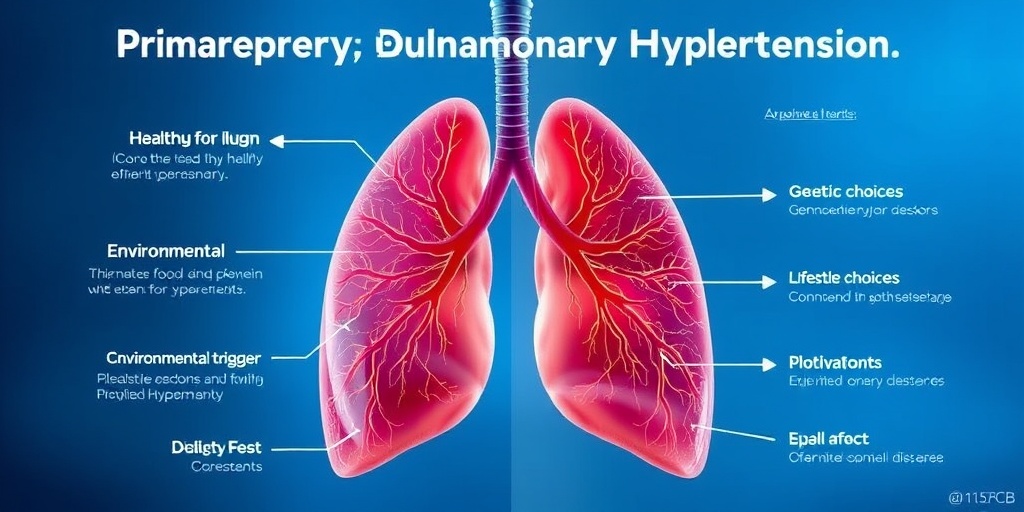
Risk Factors for Pulmonary Hypertension
Pulmonary Hypertension (PH) is a serious condition characterized by elevated blood pressure in the pulmonary arteries, which can lead to heart failure and other complications. Understanding the risk factors associated with primary pulmonary hypertension is crucial for early detection and management. Here are some of the key risk factors:
Genetic Predisposition
One of the most significant risk factors for pulmonary hypertension, primary is a family history of the disease. Genetic mutations can play a role in the development of PH, particularly in cases of familial pulmonary arterial hypertension (PAH). If you have a family member diagnosed with this condition, it’s essential to discuss your risk with a healthcare provider.
Connective Tissue Diseases
Conditions such as systemic sclerosis (scleroderma), lupus, and rheumatoid arthritis can increase the risk of developing pulmonary hypertension. These diseases can cause inflammation and damage to blood vessels, leading to increased pressure in the lungs.
Heart and Lung Conditions
Pre-existing heart and lung diseases can also contribute to the development of primary pulmonary hypertension. Some of these conditions include:
- Congenital heart defects
- Chronic obstructive pulmonary disease (COPD)
- Sleep apnea
These conditions can affect the normal functioning of the heart and lungs, increasing the likelihood of developing PH.
Obesity and Sedentary Lifestyle
Being overweight or obese can put additional strain on the heart and lungs, potentially leading to pulmonary hypertension. A sedentary lifestyle can exacerbate this risk, as regular physical activity is essential for maintaining cardiovascular health. Incorporating exercise into your routine can help mitigate this risk factor.
Use of Certain Medications
Some medications, particularly those that affect blood vessels, can increase the risk of developing pulmonary hypertension. For example, certain appetite suppressants and illegal drugs like cocaine have been linked to the condition. Always consult with a healthcare provider before starting or stopping any medication.
Environmental Factors
Exposure to certain environmental factors, such as high altitudes or toxins, can also contribute to the development of pulmonary hypertension. If you live in or travel to high-altitude areas, it’s important to be aware of how this can affect your lung health.
Diagnosis of Pulmonary Hypertension
Diagnosing pulmonary hypertension, primary can be challenging due to its subtle symptoms, which often mimic other conditions. However, early diagnosis is crucial for effective management. Here’s an overview of the diagnostic process:
Medical History and Physical Examination
The first step in diagnosing pulmonary hypertension is a thorough medical history and physical examination. Your healthcare provider will ask about your symptoms, family history, and any pre-existing conditions. During the physical exam, they may listen for abnormal heart sounds or signs of fluid retention.
Diagnostic Tests
If pulmonary hypertension is suspected, several tests may be conducted to confirm the diagnosis:
- Echocardiogram: This ultrasound test helps visualize the heart and assess the pressure in the pulmonary arteries.
- Chest X-ray: A chest X-ray can reveal any enlargement of the heart or changes in the lungs.
- CT Pulmonary Angiography: This imaging test provides detailed pictures of the blood vessels in the lungs.
- Right Heart Catheterization: This is the gold standard for diagnosing pulmonary hypertension. A catheter is inserted into the right side of the heart to measure the pressure in the pulmonary arteries directly.
Additional Testing
In some cases, additional tests may be necessary to determine the underlying cause of pulmonary hypertension. These can include:
- Blood tests: To check for conditions like liver disease or connective tissue disorders.
- Sleep studies: To assess for sleep apnea, which can contribute to pulmonary hypertension.
Early diagnosis and intervention are key to managing pulmonary hypertension, primary. If you experience symptoms such as shortness of breath, fatigue, or chest pain, it’s essential to seek medical attention promptly. 🩺
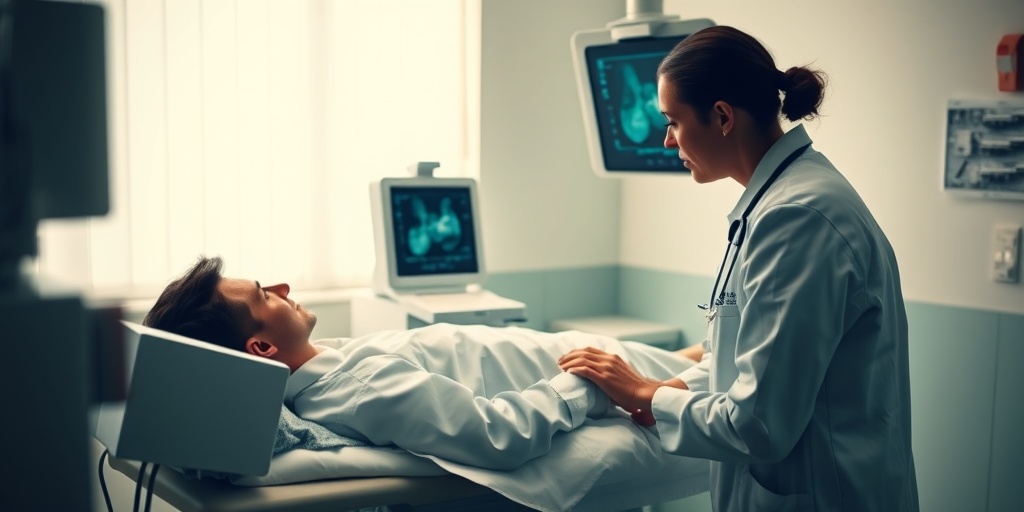
Treatment Options for Primary Pulmonary Hypertension
Primary Pulmonary Hypertension (PPH) is a rare but serious condition that affects the blood vessels in the lungs, leading to increased blood pressure in the pulmonary arteries. Understanding the treatment options available is crucial for managing this condition effectively. Here, we’ll explore various treatment modalities that can help improve the quality of life for those diagnosed with PPH.
Medications
Medications are often the first line of treatment for Primary Pulmonary Hypertension. They aim to relax and widen the blood vessels in the lungs, improving blood flow and reducing pressure. Some common classes of medications include:
- Endothelin Receptor Antagonists (ERAs): These drugs block the effects of endothelin, a substance that constricts blood vessels. Examples include bosentan and ambrisentan.
- Phosphodiesterase-5 Inhibitors: Medications like sildenafil and tadalafil help relax the blood vessels and improve blood flow.
- Prostacyclin Analogs: These are potent vasodilators that can be administered via injection or inhalation. Treprostinil and iloprost are examples.
Oxygen Therapy
For some patients, supplemental oxygen can be beneficial. This therapy helps to ensure that the body receives adequate oxygen, especially during physical activities. It can alleviate symptoms such as shortness of breath and fatigue, making daily tasks more manageable. 🫁
Advanced Therapies
In more severe cases of Primary Pulmonary Hypertension, advanced therapies may be necessary:
- Continuous Intravenous Infusion: This involves administering medications like prostacyclin continuously through an IV, which can significantly improve symptoms.
- Balloon Atrial Septostomy: A surgical procedure that creates a small hole between the heart’s atria to relieve pressure in the right side of the heart.
- Lung Transplantation: In the most severe cases, a lung transplant may be considered, especially if other treatments have failed.
Regular Monitoring and Follow-Up
Regular follow-ups with a healthcare provider are essential for managing Primary Pulmonary Hypertension. This includes routine echocardiograms and pulmonary function tests to monitor the condition’s progression and adjust treatment as necessary.
Living with Pulmonary Hypertension
Living with Primary Pulmonary Hypertension can be challenging, but with the right strategies and support, individuals can lead fulfilling lives. Here are some tips for managing daily life with this condition.
Understanding Your Condition
Knowledge is power. Understanding the nature of Primary Pulmonary Hypertension and its implications can help patients make informed decisions about their health. Educating oneself about symptoms, treatment options, and lifestyle modifications is crucial.
Adopting a Healthy Lifestyle
While it may not cure PPH, a healthy lifestyle can significantly improve overall well-being:
- Balanced Diet: Eating a heart-healthy diet rich in fruits, vegetables, whole grains, and lean proteins can help manage symptoms.
- Regular Exercise: Engaging in low-impact exercises, as advised by a healthcare provider, can enhance stamina and overall health. 🏃♀️
- Avoiding High Altitudes: High altitudes can exacerbate symptoms due to lower oxygen levels, so it’s best to avoid these environments.
Emotional Support
Living with a chronic condition can take an emotional toll. Seeking support from friends, family, or support groups can provide comfort and understanding. Connecting with others who share similar experiences can be incredibly beneficial. 💖
Staying Organized
Keeping track of medications, appointments, and symptoms can help manage Primary Pulmonary Hypertension more effectively. Consider using a planner or a digital app to stay organized and ensure that nothing is overlooked.
In conclusion, while Primary Pulmonary Hypertension presents unique challenges, understanding treatment options and adopting a proactive approach to daily living can empower individuals to manage their health effectively. With the right support and resources, it is possible to lead a fulfilling life despite the condition. 🌟
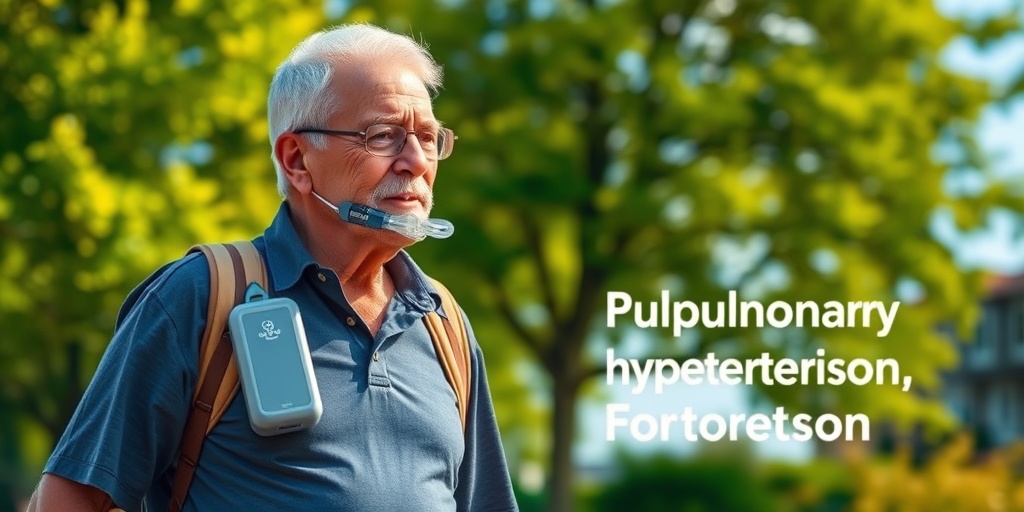
Frequently Asked Questions about Pulmonary Hypertension, Primary
What is Pulmonary Hypertension, Primary?
Pulmonary Hypertension, Primary (PH) is a rare and progressive condition characterized by high blood pressure in the pulmonary arteries, which supply blood to the lungs. Unlike secondary pulmonary hypertension, which is caused by other medical conditions, primary pulmonary hypertension occurs without any identifiable cause.
What are the symptoms of Primary Pulmonary Hypertension?
Common symptoms of Primary Pulmonary Hypertension include:
- Shortness of breath, especially during physical activity
- Fatigue
- Chest pain
- Swelling in the ankles, legs, or abdomen
- Heart palpitations
How is Primary Pulmonary Hypertension diagnosed?
Diagnosis typically involves a combination of medical history, physical examination, and tests such as:
- Chest X-ray
- Echocardiogram
- Right heart catheterization
- Pulmonary function tests
What are the treatment options for Primary Pulmonary Hypertension?
Treatment for Primary Pulmonary Hypertension may include:
- Medications to dilate blood vessels
- Oxygen therapy
- Diuretics to reduce fluid retention
- In severe cases, lung transplantation may be considered
Can Primary Pulmonary Hypertension be cured?
Currently, there is no cure for Primary Pulmonary Hypertension. However, with appropriate treatment, many patients can manage their symptoms and improve their quality of life.
What are the potential causes of Primary Pulmonary Hypertension?
While the exact cause of Primary Pulmonary Hypertension is unknown, some factors that may contribute include:
- Genetic predisposition
- Connective tissue diseases
- Chronic liver disease
- Use of certain medications or drugs
How does Primary Pulmonary Hypertension differ from Secondary Pulmonary Hypertension?
Primary Pulmonary Hypertension occurs without an identifiable cause, while Secondary Pulmonary Hypertension is a result of other underlying conditions, such as heart disease, lung disease, or chronic blood clots.
What lifestyle changes can help manage Primary Pulmonary Hypertension?
Patients can adopt several lifestyle changes to help manage their condition, including:
- Regular exercise, as advised by a healthcare provider
- Maintaining a healthy diet
- Avoiding high altitudes
- Quitting smoking
Is there a specific ICD-10 code for Primary Pulmonary Hypertension?
Yes, the ICD-10 code for Primary Pulmonary Hypertension is I27.0. This code is used for medical billing and documentation purposes.
Where can I find support for living with Primary Pulmonary Hypertension?
Support groups and organizations dedicated to pulmonary hypertension can provide valuable resources and community support. Consider reaching out to local or national organizations for assistance.
What should I do if I suspect I have Primary Pulmonary Hypertension?
If you experience symptoms associated with Primary Pulmonary Hypertension, it is important to consult a healthcare professional for a thorough evaluation and appropriate testing.

